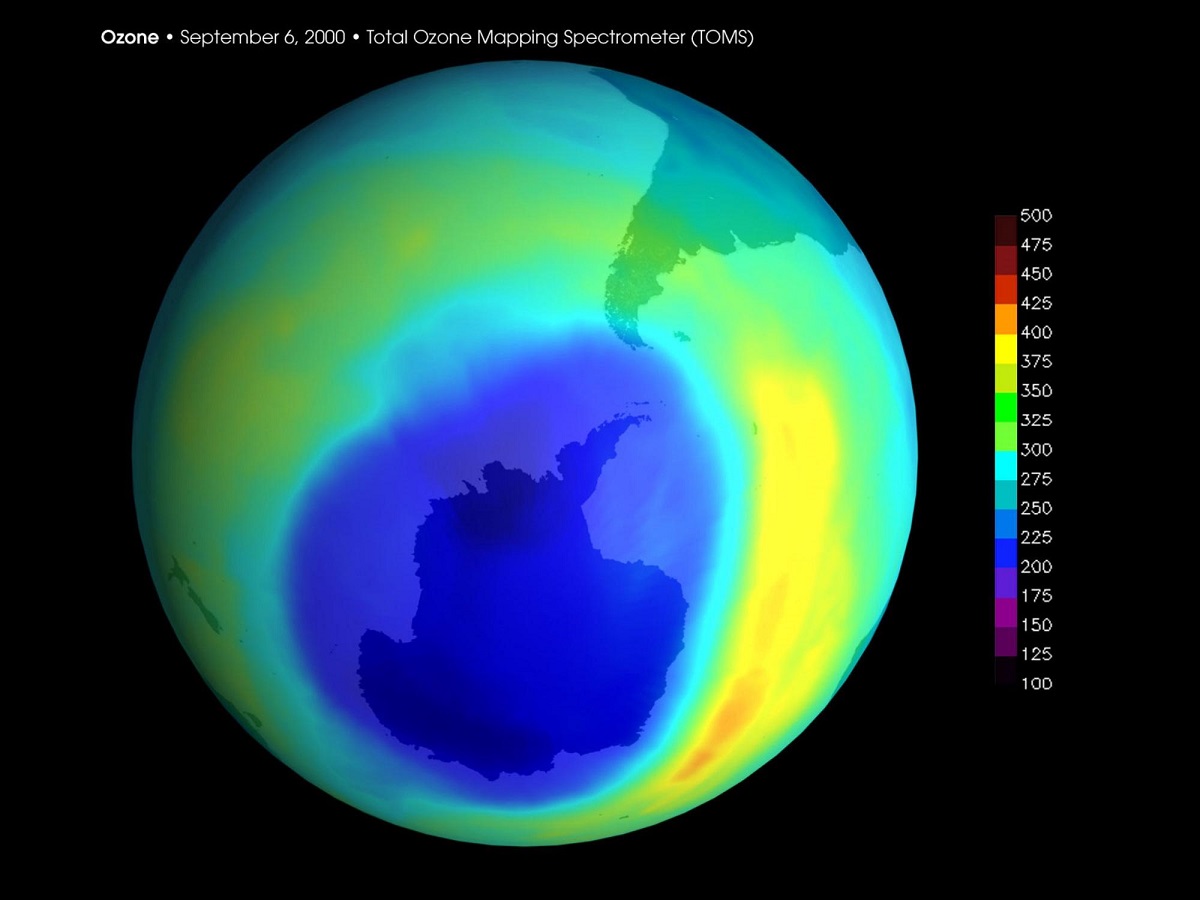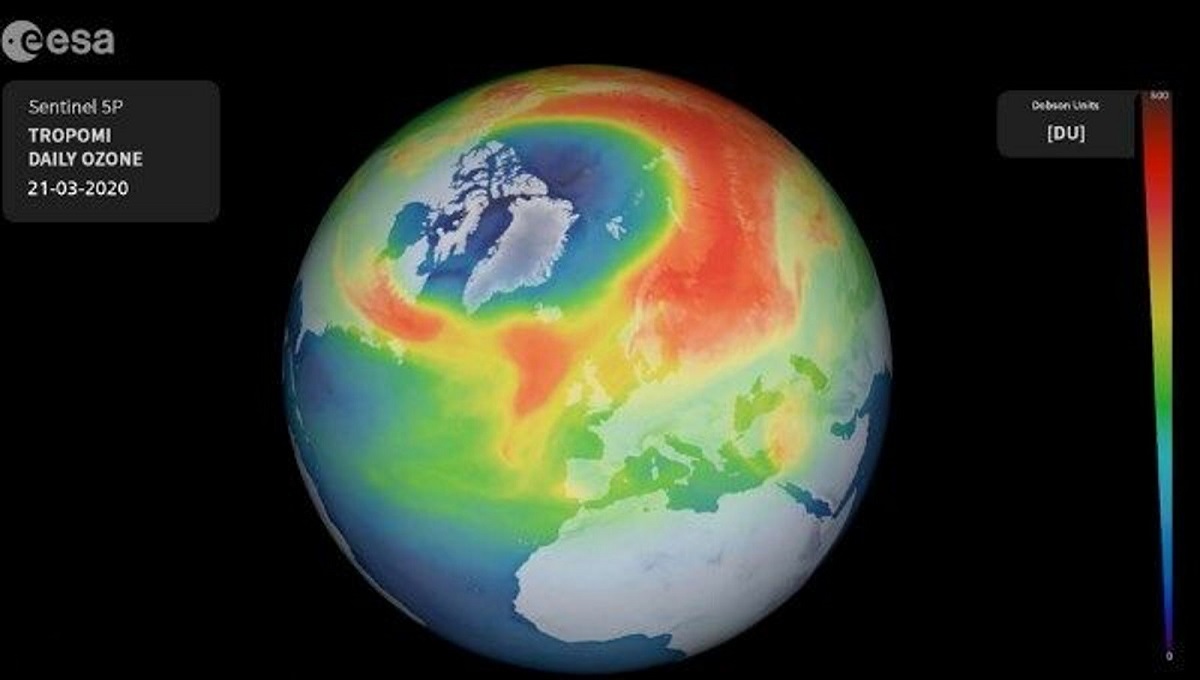
We know how important the ozone layer is for our atmosphere and for life to be maintained as we know it with a temperature that makes planet earth habitable. However, our activities cause depletion of atmospheric ozone with the consequent reduction in the thickness of the layer that protects us from the sun's rays. There are numerous ways to reduce ozone depletion.
In this article we are going to tell you what are the ways to reduce ozone depletion, and what we can do for it.
Importance of the ozone layer

Ozone is an atmospheric molecule in gaseous form, formed by three oxygen atoms, located in the troposphere and extending throughout the stratosphere, the layer located between 18 and 50 kilometers above the earth's surface. The ozone layer forms a thick layer in the stratosphere, which surrounds the Earth and contains a large amount of ozone.
It was discovered in 1913 by the French physicists Charles Fabri and Henri Bisson. Ozone concentration in the atmosphere varies naturally with climate, temperature, altitude, and latitude, and substances produced by natural events can also affect ozone levels.
In ozone we have oxygen molecules that act as a cloak that protects us from UV radiation (direct contact with sunlight). Harmful UV rays contribute to the risk of fatal diseases such as cataracts, skin cancer, and damage to the immune system.
Lightning can also disturb terrestrial plant life, unicellular organisms, growth disorders, biochemical cycles, food chains/webs and aquatic ecosystems.
The phenomenon behind the activity of the ozone layer is that the ozone molecules absorb a part of the ultraviolet radiation and send it back into space, in this case minimizing the amount of radiation that reaches the earth.
However, human activities such as industrialization have exacerbated the depletion of the ozone layer. Ozone depletion has been found to be due to the presence in the stratosphere of chlorofluorocarbons (CFCs) and other halogen source gases known as ozone-depleting substances (ODS).
These substances are synthetic chemicals that have been used worldwide in industrial and consumer applications. These substances are used in refrigerators, fire extinguishers, and air conditioners. They are also insulating foams like solvents, blowing agents and aerosol propellants.
This creates a hole in the ozone, which is located at the poles of the Arctic and Antarctic oceans and allows a large amount of ultraviolet radiation to penetrate the land. Emissions from natural and man-made causes end up in the stratosphere and deplete ozone molecules, increasing the size and impact of this hole in the ozone layer.
This has become an environmental challenge because it represents a threat to life forms on Earth. Most of the ozone-depleting substances emitted by human activities have been enriching in the stratosphere for decades, which means that the recovery of the ozone layer is a very slow and long process. Therefore, there is a need to reduce the rate of ozone depletion.
Ways to reduce ozone depletion

Strictly apply the Convention and Protocol
To reduce ozone depletion, countries around the world have agreed to stop using ozone-depleting substances. The agreement was signed in 1985 as the Vienna Convention for the Protection of the Ozone Layer and the 1987 Montreal Protocol on Substances that Deplete the Ozone Layer.
The main substances covered by the Protocol include chlorofluorocarbons (CFCs), hydrochlorofluorocarbons (HCFCs), halons, carbon tetrachloride, methyl chloroform and methyl bromide, all of which are referred to as “controlled substances”.
The damage caused by these substances to the ozone layer is expressed by their ozone depletion potential (ODP). In 2009, the Vienna Convention and the Montreal Protocol became the first universally ratified treaties in the history of the United Nations.
Reduction of gases that deplete the ozone layer

There is a need to avoid the use of gases that are harmful to the ozone layer, used as contents to facilitate the operation of certain equipment, and even as raw materials in industrial manufacturing processes. Some of the most dangerous gases are chlorofluorocarbons (CFCs), halogenated hydrocarbons, methyl bromide and nitrous oxide (N2O).
Reduce the use of vehicles
Nitrogen oxides (N2O) and hydrocarbons emitted by buses, cars, trucks, and other vehicles contribute to air pollution and affect the ozone layer. Therefore, the rate at which the ozone layer is depleted can be reduced by using public transportation, carpooling, gradually increasing the speed of cars, hybrid or electric vehicles, bicycles or walking short distances. This helps minimize the use of fuel-guzzling vehicles, which reduces air pollution.
Avoid products with ozone-depleting substances
Some of the products we use, such as cosmetics, aerosols, foaming agents, hairsprays and cleaning products, they are harmful to us and the environment because they are made of substances that deplete the ozone layer, such as nitrous oxide, halogenated hydrocarbons, methyl bromide, hydrofluorocarbons (HCFCs) are corrosive, but can be substituted with harmless products or ecological.
Reduce the use of imported products
Buy local products. In this way, you not only get fresh products, but also avoid transporting food over long distances. Nitrous oxide is produced by the engines of cars that bring in food and necessary goods as a result of long trips. From there the need to patronize local food and produce, not only for the freshness of food, but also for the protection of the ozone layer.
Maintenance of air conditioners and refrigerators
The main cause of burnout can be attributed to the misuse of refrigerators and air conditioners that contain chlorofluorocarbons (CFCs). Malfunctioning refrigerators and air conditioners can leak CFCs into the atmosphere. Therefore, regular maintenance of the equipment and proper disposal when not in use is recommended.
Use of electrical appliances and energy-saving light bulbs
As a homeowner, energy efficient appliances and light bulbs not only do they help save money, but more importantly, they help protect the environment. This can go a long way toward reducing greenhouse gas (GHG) emissions and other environmental pollutants that affect ozone. Energy labels aren't the only way to go green, they can also help consumers choose the most energy efficient products. In other words, it is also an economical solution for families.
I hope that with this information you can learn more about ways to reduce ozone depletion and how we can help the atmosphere.